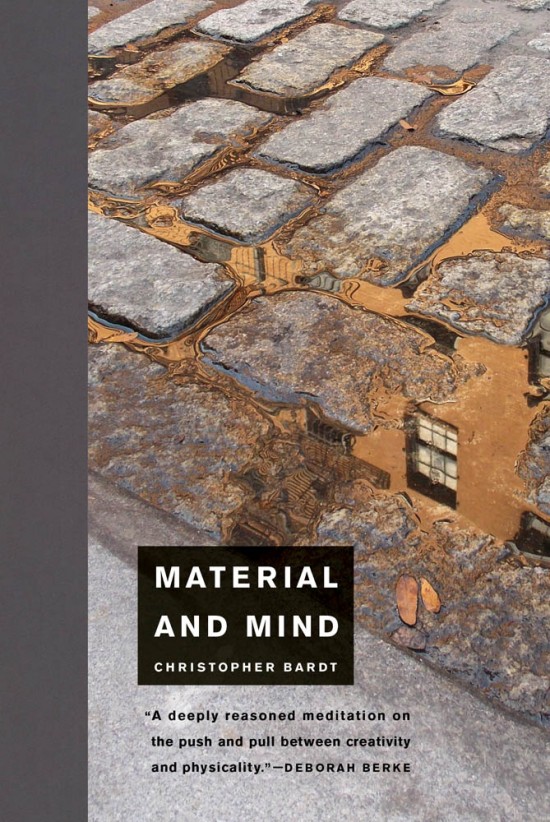Material And Mind
An in-depth exploration of the interaction between mind and material world, mediated by language, image, and making—in design, the arts, culture, and science.
About The Book
An in-depth exploration of the interaction between mind and material world, mediated by language, image, and making—in design, the arts, culture, and science.
In Material and Mind, Christopher Bardt delves deeply into the interaction of mind and material world, mediated by language, image, and the process of making. He examines thought not as something “pure” and autonomous but as emerging from working with material, and he identifies this as the source of imagination and creative insight. This takes place as much in such disciplines as cognitive science, anthropology, and poetry as it does in the more obvious painting, sculpture, and design. In some fields, the medium of work is, in fact, the very medium of thinking—as fabric is for the tailor.
Drawing on the philosophical notions of the “extended mind” and the “enactive mind,” and looking beyond the world of material-based arts, Bardt investigates the realms in which material and mind interweave through metaphor, representation, projection, analogues, tools, and models. He considers words and their material origins and discusses the paradox of representation. He draws on the design process, scientific discovery, and cultural practice, among others things, to understand the dynamics of human thinking, to illuminate some of the ways we work with materials and use tools, and to demonstrate how our world continues to shape us as we shape it. Finally, he considers the seamless “immaterial” flow of imagery, text, and data and considers the place of material engagement in a digital storm.
Endoresements
This eloquent book demonstrates the ways that imagination and creativity are intertwined with physical material. Framing the problem of creativity through enactive cognition, it vindicates the precedence of the maker’s embodied engagement with materials across disciplines and historical perspectives, revealing both shortcomings and possibilities for our age of technological obsessions.
Alberto Perez-Gomez, School of Architecture, McGill University; author of Attunement
Do we make our materials or do our materials make us? Architect, author, and academic Christopher Bardt takes the reader on a thrilling and poetic journey through time to deconstruct meaning, making, and what it truly means to be a creative thinker. Material and Mind is a remarkable book from an utterly original mind; it will fundamentally change the way you think about how humans create.
Debbie Millman, Chair, School of Visual Arts, Masters in Branding; podcast host, Design Matters
Chris Bardt examines the interactions between material and mental phenomena and the essences of the creative process—turning ideas, feelings, and intuitions into material forms. The author draws from the histories of the arts as well as literature and poetry, philosophy, psychology, and neuroscience, and the realities of various artistic practices. He does not attempt to simplify the complexities of the existential and experiential world, but presents the internal interactions and tensions, as well as their inherent uncertainties. An erudite and enticing exploration into the intriguing realm between matter and mind.
Juhani Pallasmaa, architect; Professor Emeritus, Helsinki University; author of The Thinking Hand and The Embodied Image
As digital tools expand formal possibilities and revolutionize construction techniques, Chris Bardt’s Material and Mind is a deeply reasoned meditation on the push and pull between creativity and physicality. Bardt argues that the digital and material should be equal and integrated, reciprocal and balanced. In his view, the very soul of architecture is at stake.
Deborah Berke, FAIA, Dean of the Yale School of Architecture
Bardt’s Material and Mind is an inspiring read that allows us to see the agency and potential in materials and the interactions we have with them.
Academic Chatter Review of Books
